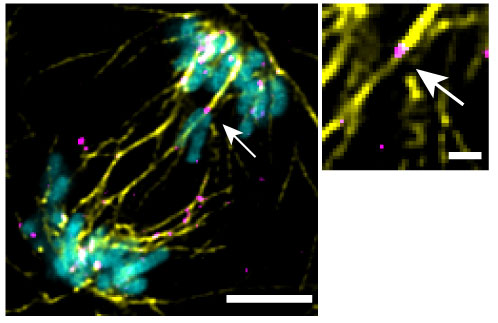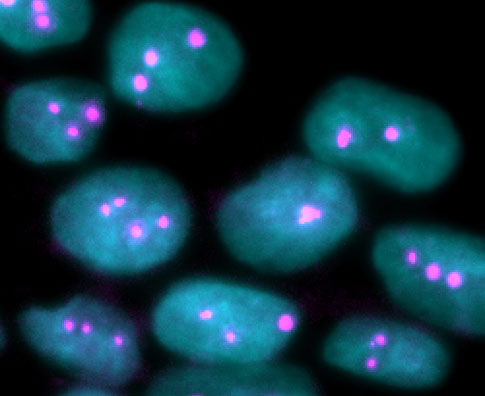Our current research projects are focused on understanding the causes and consequences of aneuploidy during human development. We use human pluripotent stem cells and a multi-disciplinary approach to investigate aneuploidy in development.
1. Identifying the Mitotic Pathways Responsible for Chromosome Segregation Errors in hPSCs

2. Investigating How the Cell Cycle Structure of hPSCs Influences their Response to Chromosome Segregation Errors
Previous studies show that following a chromosome segregation error in mitosis, somatic cells often respond in the subsequent G1 and initiate cell cycle arrest to prevent the propagation of aneuploid cells. However, G1 has a significantly shorter duration in hPSCs (~2.5-3 hrs) compared to somatic cells (~10 hrs). We are investigating how the distinct G1 cell cycle structure of hPSCs influences their response to chromosome segregation errors.

3. Exploring How Aneuploidy Impacts Embryonic Tissue Formation
A consequence of mitotic errors in human preimplantation embryonic cells is the formation of mosaic human embryos composed of diploid and aneuploid cells. Recent studies show that mosaic in vitro fertilization (IVF) human embryos can lead to normal development but how this occurs is unknown. We are investigating the impact of aneuploidy on embryonic tissue formation to better understand how genome stability is eventually achieved to support normal development.



